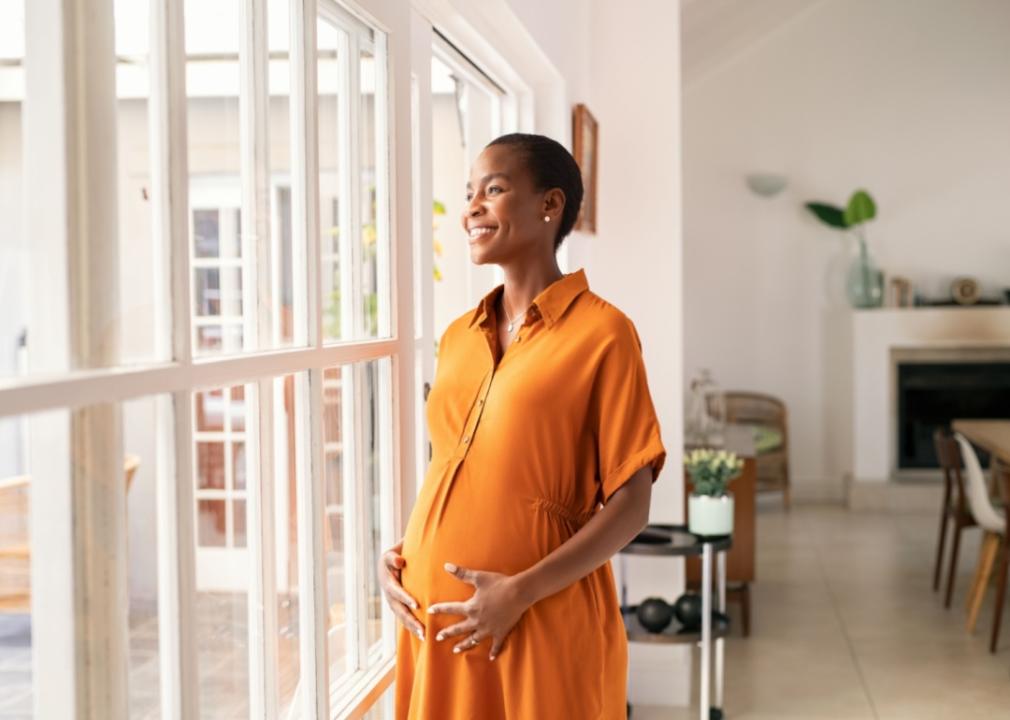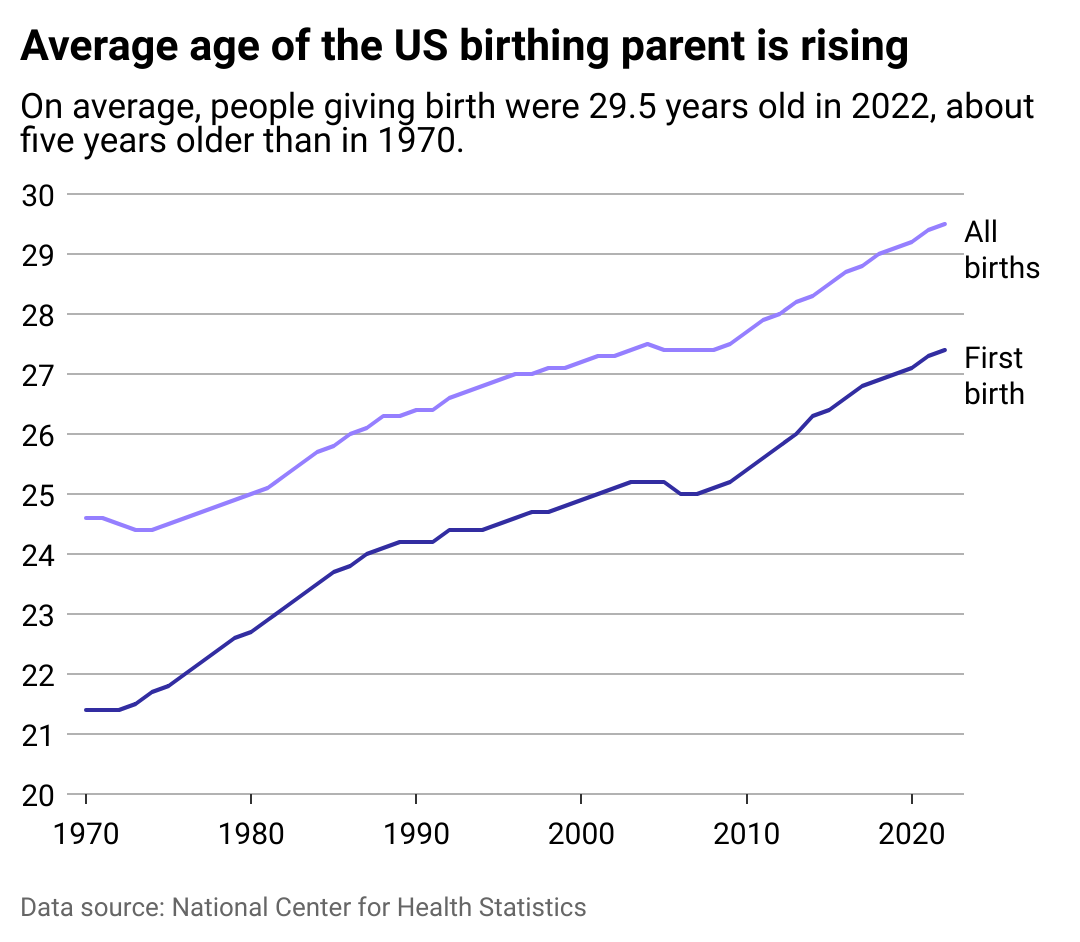Here's how the average childbirth age has changed over time
Northwell Health partnered with Stacker to chart the rising maternal age over time, looking into the socioeconomic forces behind later births and the science that makes it possible.

New moms are trending older—and have been for decades.
Those giving birth in 2022 averaged older than 29, and those having their first child weren't far behind at about 27 years old. That's up five and six years, respectively, from 1970, according to National Center for Health Statistics data.
Using this data, Northwell Health partnered with Stacker to chart the rising maternal age over time and researched the social, economic, and health care forces behind later births.
Older parents typically have higher levels of education and have had more time to build their careers and earnings. This means they may be in a better position to afford a higher quality of life for themselves and their children. Some studies have even shown that women who were older when they began having kids earned more over their careers and experienced smaller gender wage gaps.
Most pregnancies are normal and healthy, even for those having children in their 30s and early 40s. However, geriatric pregnancies—in which the birthing parent is 35 or older—bring with them greater odds of health problems and complications that could result in C-section deliveries. These health issues may include preeclampsia, gestational diabetes, premature birth, low birth weight, twins, and genetic disorders. There is also a heightened risk of dying in pregnancy and childbirth. Lastly, getting pregnant can also be more difficult due to lower fertility rates and fewer eggs to potentially fertilize.
Some of these risks can be mitigated with high-quality health care, including alternative fertilization methods, and advanced imaging and monitoring available today, including ultrasound diagnostic tools, prenatal diagnostics, screening strategies, and preventative medicine.
Individuals with high levels of education or deeper pockets (or both) are also more likely to have additional resources at their disposal. A study published in the medical journal JAMA in 2021 found that those who were pregnant at 35 had more prenatal care services than those pregnant at younger ages and were more capable of affording additional care or fertility services.
Editor's note: Some studies and stats depended on using "women" in their terminologies or demographic breakdowns. Where possible, we used gender-neutral language to appropriately describe individuals who can experience pregnancy, as cisgender women are not the only people who can become pregnant or give birth.
Those giving birth average almost 5 years older than in 1970

There are myriad contributing factors to modern-day delays in parenthood.
One such influence is the advent of a newly recognized life stage coined "emerging adulthood," in which Americans aged 18-25 are less likely to couple up and settle down and more likely to focus on social circles, identities, education, experimentation, and travel. For many in this group, building a family may lack urgency or carry less importance overall.
The professional landscape has changed too. A 2021 Pew Research Center analysis found that women attended and graduated from college at higher rates than men, and their workforce participation has grown substantially since the 1970s. As women focus on building themselves and their careers, they're more likely to put off having children—if they plan to have kids at all.
Another factor driving older ages at birth is a major decline in teen parenthood. The prevalence of sex education and birth control has helped bring down the rate of unintended or unplanned pregnancies, particularly among teens.
There are significant differences in average birth ages among different demographic groups, including along racial and ethnic lines, education levels, and geography.
Women with college degrees tend to have children later in life than the average, according to the Pew Research Center. White and Asian birthing parents and people living in urban areas and along the coasts are also more likely to have children at older ages. Some of the differences are cultural; others are based on personal preferences or beliefs among these populations, along with family dynamics and access to sex education.
Story editing by Nicole Caldwell. Copy editing by Paris Close. Photo selection by Lacy Kerrick.
This story originally appeared on Northwell Health and was produced and distributed in partnership with Stacker Studio.
Comments





